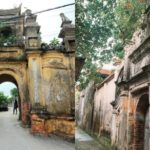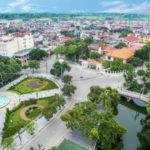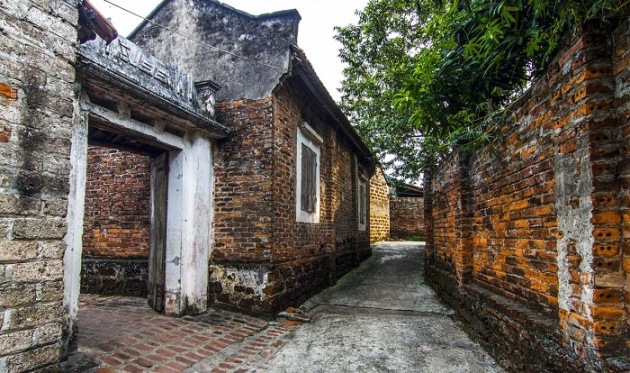
The ancient beauty of Duong Lam.
Dubbed as an ancient village, Duong Lam retains numerous ancient houses, communal houses, temples, churches, village gates, and wells. The cultural elements that constitute the village are still intact, including the ‘quan ro’, village gate, communal house, temple, pavilion, well, and clan house. Especially, to this day, the village still preserves traditional crafts such as peanut candy, sausage candy, and lam rice cake.
Notably, this land is also famous for its talented and outstanding scholars, who have made great contributions to the nation’s history.
Stepping into Duong Lam, visitors are amazed by the ancient, poetic, and peaceful scenery of a “co tuan” (ancient town) just a few dozen kilometers away from Hanoi’s inner city. Most tourists who come here are impressed by the ancient and mossy gate of Mong Phu village, and the ancient houses that still retain their old splendor…
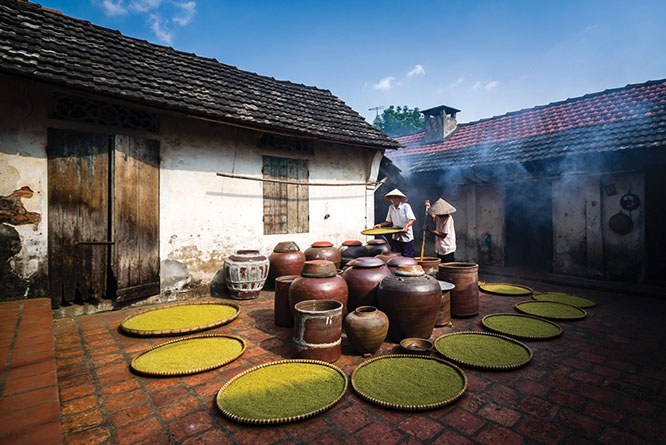
Traditional peanut candy-making in Duong Lam
Tourists are also impressed by the rich cuisine of the region. Famous specialties such as sugarcane chicken, pickled eggplant in soy sauce, hot rice cakes, peanut porridge, gai cake, and peanut candy seem to invite visitors from all directions. Especially, the village is also famous for its renowned ‘tuong ban’ (a type of soybean paste). After a tiring day of exploring, visitors can stop by a roadside cafe, sit in the communal house yard, drink tea, and enjoy local treats such as lam rice cake, peanut candy, and sesame candy while taking photos.
Famous attractions in Duong Lam that tourists must not miss:
Ancient Village Gate of Duong Lam – Mong Phu
This is considered the only ancient village gate still intact in Northern Vietnam. The gate was built in 1833 with an arched architecture and layers of beehive stones. As the gate faces southeast, during the hot summer days, the space within the gate acts like a giant fan, providing a cooling effect and relieving the tiredness of the villagers after a hard day’s work in the fields. Next to the gate is a 300-year-old banyan tree that adds to the peaceful and ancient scenery.
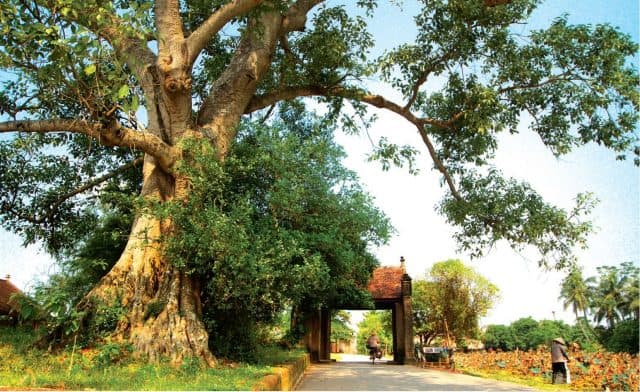
The peaceful and poetic village gate
Mong Phu Communal House
According to legend, the Mong Phu Communal House was built on the head of a dragon, at the highest point of the village. Two wells on either side are said to be the dragon’s eyes, and two streams are its whiskers, with the tail stretching towards ‘xom sai’. The communal house yard is always clean and is likened to a giant ‘nong’ (a traditional Vietnamese drying tray) where villagers can dry their agricultural produce on sunny days. It also serves as a playground for the elderly and children. Currently, the communal house still preserves 17 royal decrees, a palanquin, religious objects, horizontal lacquered boards, and more.
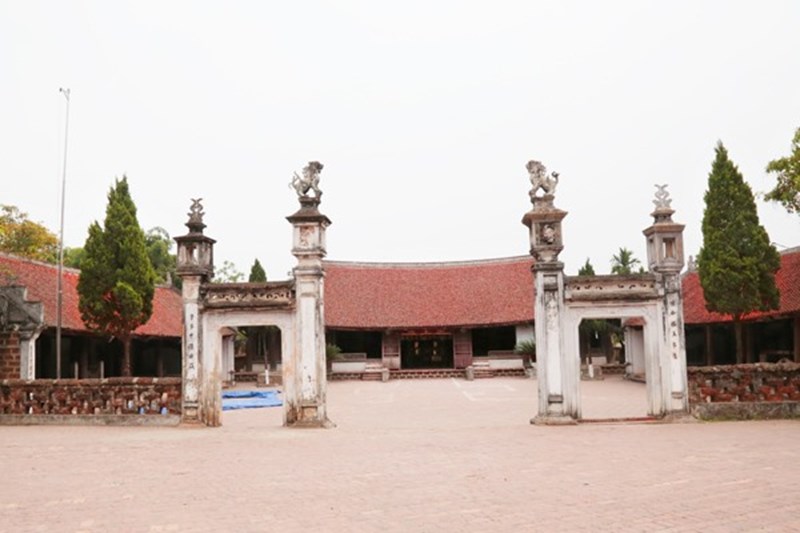
The ancient and majestic communal house
Thám Hoa Giang Văn Minh’s House
Thám Hoa Giang Văn Minh’s House, located in Mong Phu village, is a relic built during the reign of King Tu Duc. Thám Hoa Giang Văn Minh was a Vietnamese envoy to China in the 17th century. The house still preserves several valuable artifacts such as parallel sentences, stelae, incense burners, and bronze vases.
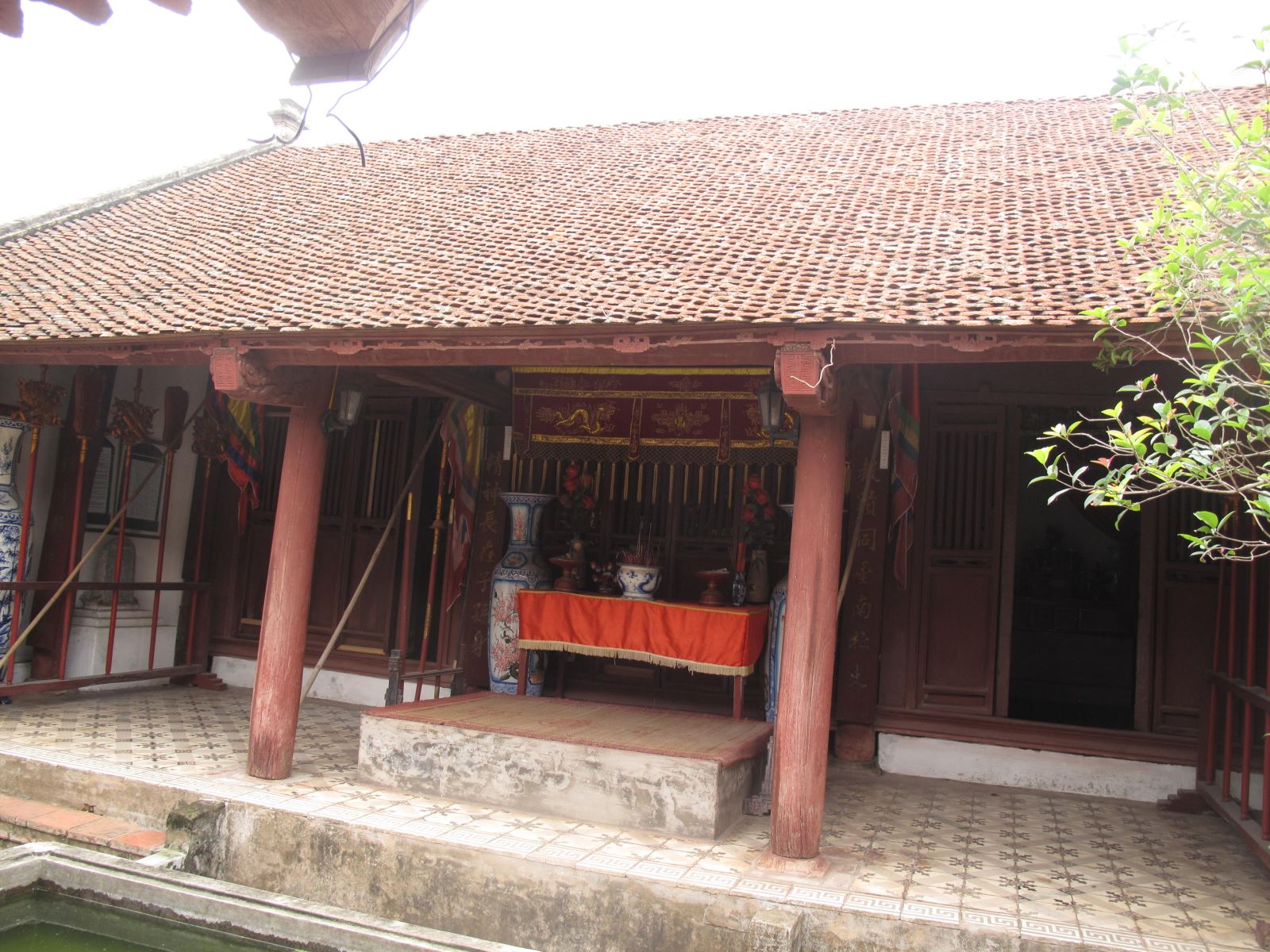
The house contains many precious artifacts
Ancient Houses
Duong Lam ancient village currently has 956 ancient houses built from 1649 onwards. Most of the ancient houses are constructed in the style of five- or seven-room houses using materials such as xoan wood, bamboo, baked bricks, red packages, beehive stones, or sawdust. The houses’ compounds are spacious, divided into sections: a covered gate, the main house, a horizontal house, a yard, a kitchen, a garden, a well, a barn, and a straw house. Some of the most beautiful and famous ancient houses in the village that visitors can explore include the houses of Mr. Nguyen Van Hung, Mr. Ha Nguyen Huyen, and Ms. Duong Lan.
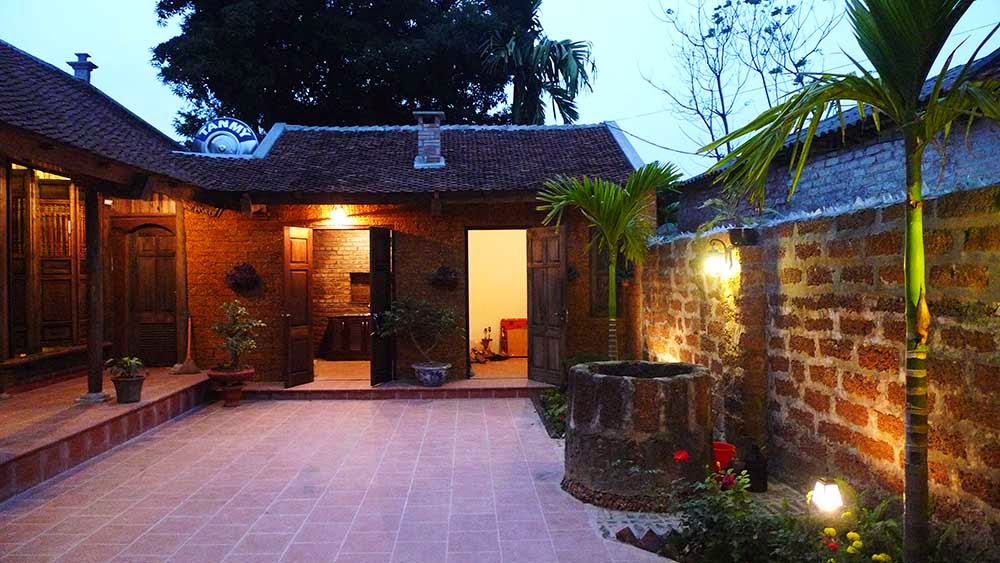
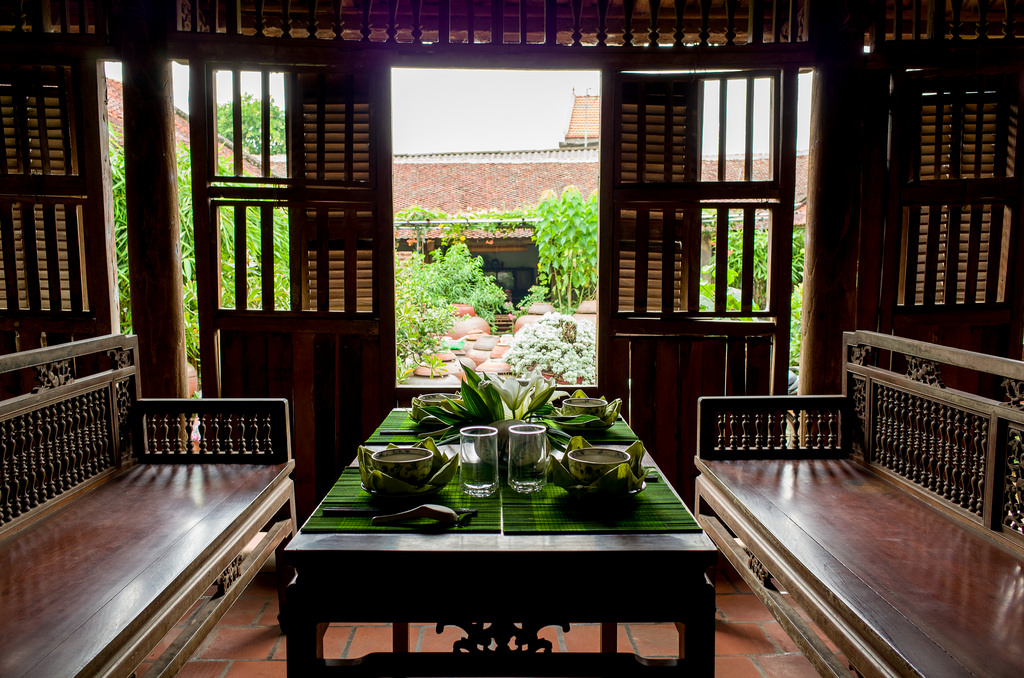
Visitors feel like they’ve stepped into a poetic ancient town in Duong Lam
Duong Lam Ancient Well
The ancient well of Duong Lam is located at various points in the village, mainly at the crossroads. Similar to the communal house, the well is also the soul of many Vietnamese villages. The wells are not too deep, and the mouth of the well is paved with baked bricks, creating a unique and rare sight.
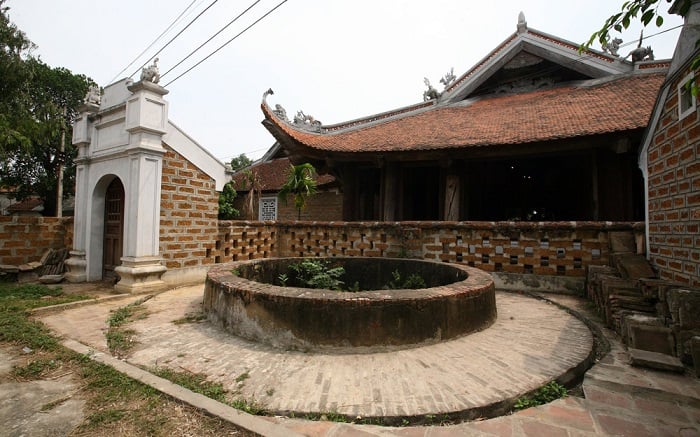
The ancient and mossy well
Temple and Tomb of Ngo Quyen King
The Temple and Tomb of Ngo Quyen King have a small area, but the surrounding area is very spacious, with four seasons of green shade from precious trees and flowers, creating a cool, comfortable, harmonious, and sacred space. In addition to visiting the relic site, tourists can also reminisce about the surrounding places associated with the merits, life, and career of King Ngo Quyen, such as Ngoc Well, Hum Vung, Dan Troi, and Xa Mao Beach.
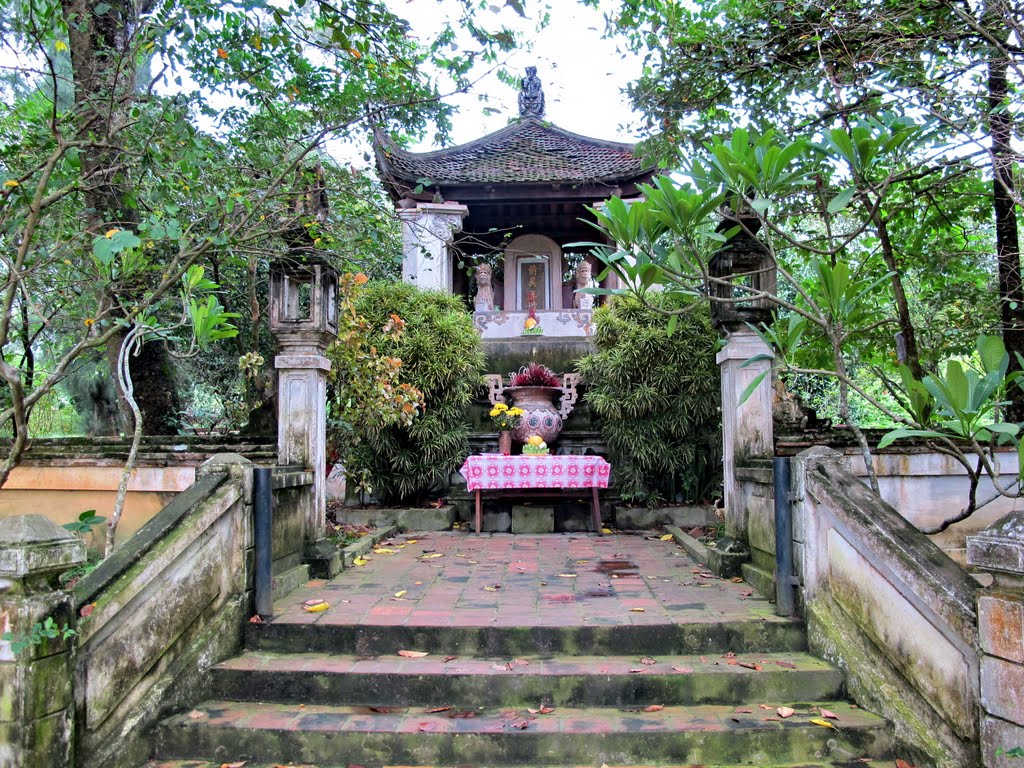
The Temple and Tomb of Ngo Quyen King, shaded by green trees
Phung Hung Temple
Phung Hung Temple was built by the villagers to honor the great contributions of ‘Bo Cai Dai Vuong’ Phung Hung. This is one of the largest-scale temples, featuring a unique and strange architecture that holds many historical and cultural values of the Vietnamese. Although it has been restored and recreated, the temple still retains its ancient and historical beauty. The decorative patterns in the temple are very special and unique, featuring images of chicken heads and roof edges.
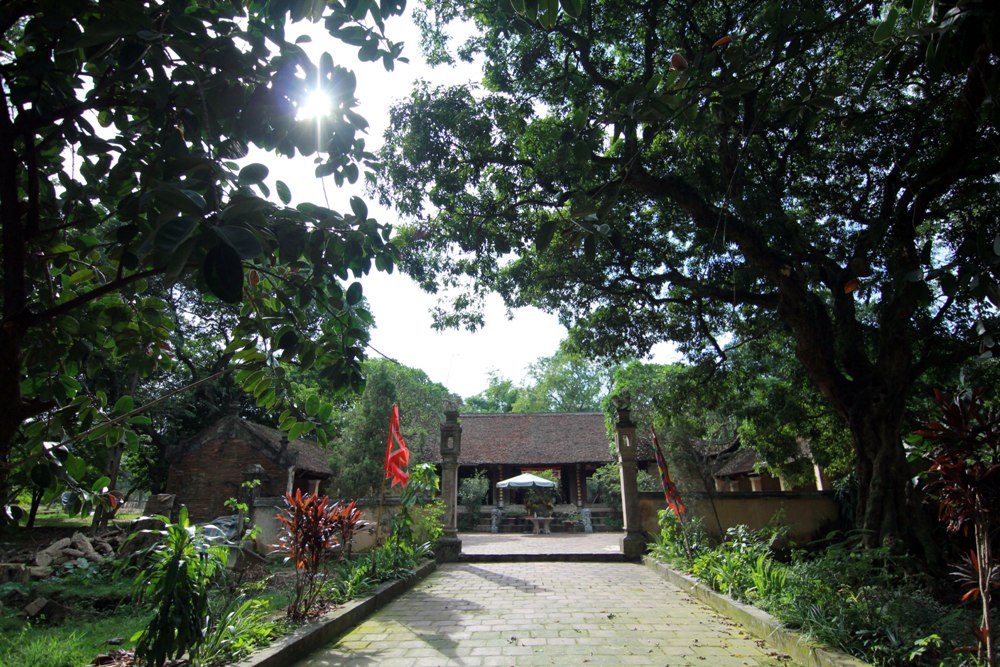
The ancient beauty of Phung Hung Temple, dedicated to ‘Bo Cai Dai Vuong’ Phung Hung.
Finding Peace: Exploring Five Centuries-Old Villages in Hanoi’s Heart
Nestled not far from the bustling heart of Hanoi lies a cluster of villages that have stood the test of time. These hamlets are a living testament to a bygone era, boasting architecture that is both ancient and humble. The tranquility that envelops these villages is truly extraordinary, offering a serene escape from the hustle and bustle of city life.

























